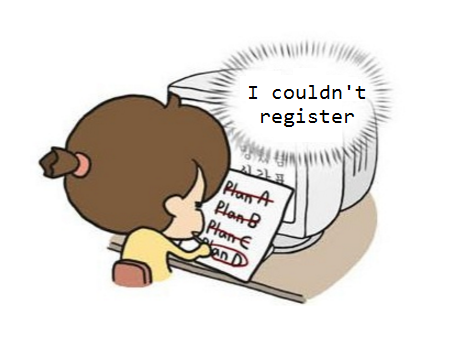
Most notably, Yonsei University has used ‘Y-CES (Yonsei Course Enrollment System),’ which allows students to bid on subjects of courses, since the second semester of 2015. Each student receives 72 to 76 mileage points depending on their major. The maximum mileage students are allowed to invest in a subject is fixed at 36. This information is based on Yonsei University’s announcement in 2016. Since the mileage granted standard is based on the amount of available credits at each department, not considering the difference of competition rate between departments, there is voice that this is improper.
Sookmyung Women’s University also has a unique registration system. The university receives course applications during their initial enrollment period. Once the number of incoming students exceeds the university’s capacity, the university sorts and selects the students. In elective courses, students with higher grades have priority. The second standard is the number of credits the students invest and their grades in the previous semester. Whereas in major courses, the standard depends on whether the courses are in their majors or not. If students have the same priority to register for a course, the standards for elective courses are used to determine who has the higher priority.
As an alternative to the first-come-first-served-system, some universities use the packaged registration system (also known as the 'shopping basket system'). Students can put the courses for the next semester in ‘baskets’ by clicking. When the enrollment period starts, students access the enrollment site and finish their registration by just adding courses in their ‘baskets’. This way seems to be better than the first-come-first-served system, but it has the same drawbacks.
Universities make efforts to satisfy students’ demands. Sometimes professors even show kindness to students who failed in enrollment by allowing them to attend classes, but this can not be a fundamental solution. It is important that students take the courses they need. One way to solve this problem can be extending the amount of classes with high demand or increasing the maximum number of class.
image source: naver.com
ى €ى‘권ىگ © يڈ¬ي•ê³µëŒ€ى‹ 문 무단ى „ى¬ ë°ڈ ى¬ë°°يڈ¬ 금ى§€


